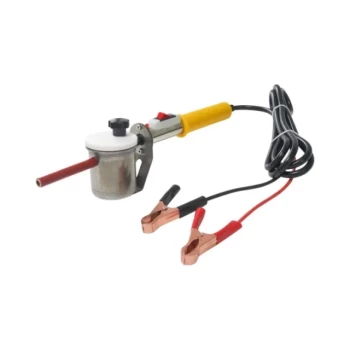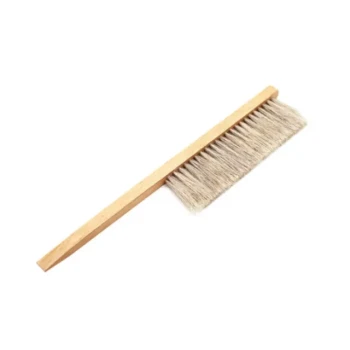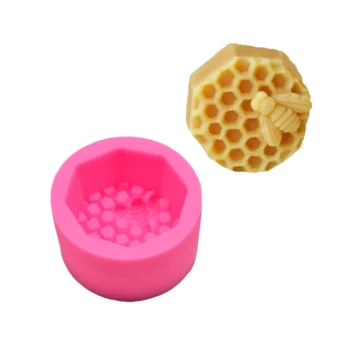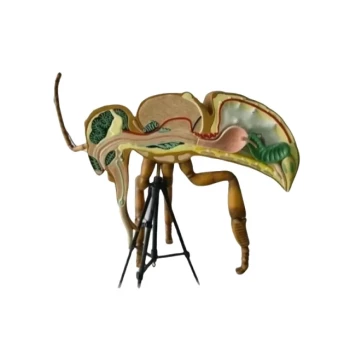In short, using oxalic acid for Varroa treatment is safe only when you follow strict personal protection protocols. This involves, at a minimum, wearing acid-resistant gloves, wrap-around goggles, and a proper respirator, especially when vaporizing. The chemical is highly effective against mites but poses a significant corrosive risk to your skin, eyes, and respiratory system if handled improperly.
Oxalic acid is a powerful, residue-free tool against Varroa mites. However, its safety is not inherent to the substance itself; it is entirely dependent on the beekeeper's discipline in using personal protective equipment and applying it under the right conditions for the colony.
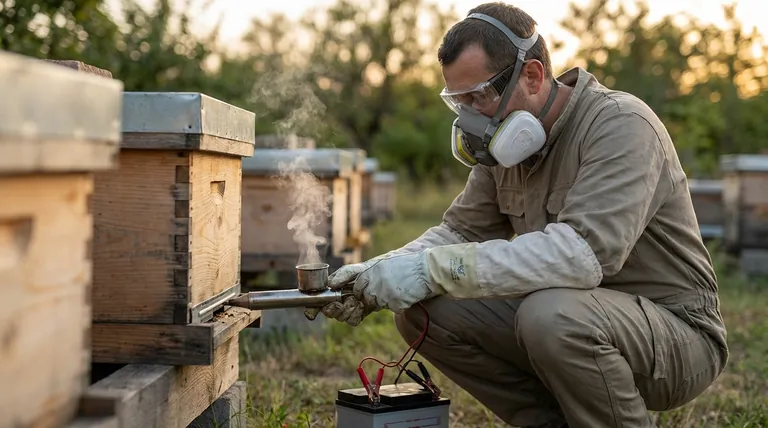
Why Choose Oxalic Acid?
Before diving into safety protocols, it's important to understand why beekeepers turn to oxalic acid. Its benefits are significant when compared to synthetic alternatives.
High Efficacy on Mites
Oxalic acid is highly effective, capable of killing 90% or more of the mites in a hive. Its primary mode of action is believed to be absorption through the mite's feet, leading to a quick death.
However, this effectiveness is almost entirely limited to phoretic mites—those riding on the bodies of adult bees.
No Residue in Honey or Wax
Unlike many synthetic miticides, oxalic acid is a natural component of honey. When used correctly according to label directions, it does not leave harmful residues in honey or contaminate the beeswax.
This makes it a preferred choice for beekeepers focused on producing pure, natural honey and minimizing chemical inputs in the hive.
Mitigates Mite Resistance
Varroa mites can develop resistance to synthetic chemical treatments over time, rendering them less effective. Because of its direct mode of action, oxalic acid has not been shown to promote this same type of resistance.
Personal Safety: A Non-Negotiable Requirement
Oxalic acid is a strong acid. Treating it casually is a significant mistake that can lead to serious injury. Your safety plan must account for all forms of exposure.
Protecting Your Lungs
The greatest personal risk comes from inhaling the substance. This is especially true when handling the raw crystal powder or, most critically, when using the sublimation method.
You must wear a properly fitted respirator with cartridges rated for organic acids/vapors. A simple dust mask is completely inadequate and offers no protection against the vapor.
Protecting Your Skin and Eyes
Oxalic acid is corrosive. Direct contact with the crystals or the mixed solution can cause chemical burns on the skin. Splashes can cause severe and permanent eye damage.
Always wear chemical-resistant gloves (nitrile or neoprene) and sealed, wrap-around safety goggles.
Safe Preparation and Handling
Always read and follow the specific instructions on the product label you are using. When mixing a solution for the dribble method, do so in a well-ventilated area, and be mindful to avoid creating and inhaling any dust from the crystals.
Understanding the Trade-offs and Risks
While effective, oxalic acid is not a perfect solution. Understanding its limitations is key to using it safely and successfully.
The Critical Limitation: Capped Brood
Oxalic acid does not kill Varroa mites inside capped brood cells. Mites reproduce under these cappings, where they are completely protected from the treatment.
Therefore, a single application during a period of heavy brood rearing will leave a significant population of mites untouched, ready to emerge and re-infest the colony.
Risk to the Colony
While generally considered "bee-safe" when applied correctly, improper use can harm the bees. Applying it at high ambient temperatures or in excessive doses can increase bee mortality.
The goal is to kill the mites, not stress the colony. This is why timing and dosage are critical.
Key Application Methods and Their Safety Implications
The two primary methods for applying oxalic acid each come with distinct safety considerations.
The Dribble Method
This involves mixing oxalic acid dihydrate with sugar syrup and dribbling a measured amount directly onto the bees between the frames.
The primary safety risk occurs during the mixing phase, where you must be protected from dust and splashes.
The Sublimation (Vaporization) Method
This involves using a specialized tool to heat oxalic acid crystals until they turn directly into a vapor, which fills the hive. This is often considered more effective and less invasive to the bees.
The primary safety risk is vapor inhalation. It is absolutely essential to wear a respirator and stand upwind of the hive during application, as the vapor can easily escape from the hive entrance and any gaps.
Making the Right Choice for Your Goal
Your approach to using oxalic acid should be determined by your priorities for safety, efficacy, and hive management.
- If your primary focus is minimizing personal chemical exposure: The dribble method may be preferable, as it avoids creating a vapor cloud, though strict PPE is still required for mixing.
- If your primary focus is maximum treatment efficacy: The sublimation method is often considered superior and can be performed without fully opening the hive, but it demands an unwavering commitment to respiratory protection.
- If your primary focus is hive health and mite control: Apply any oxalic acid treatment during a broodless period, such as late fall or winter. This ensures the vast majority of mites are exposed and results in the highest possible kill rate.
By understanding and respecting the risks involved, you can confidently use oxalic acid as a safe and highly effective part of your Varroa management strategy.
Summary Table:
| Safety Aspect | Key Consideration |
|---|---|
| Personal Protection | Wear acid-resistant gloves, wrap-around goggles, and a respirator rated for organic acids. |
| Application Methods | Dribble method risks splashes; sublimation/vaporization risks vapor inhalation. |
| Hive Health | Apply during a broodless period for maximum efficacy. Avoids harming capped brood. |
| Primary Risk | Inhalation of vapor during sublimation is the greatest personal safety hazard. |
Protect Your Apiary with Confidence
Safely managing Varroa mites is critical for commercial beekeeping success. HONESTBEE supplies professional-grade beekeeping supplies and equipment, including the PPE and application tools necessary for safe and effective oxalic acid treatments. We support commercial apiaries and distributors with wholesale-focused operations.
Contact HONESTBEE today to discuss your apiary's needs and ensure you have the right equipment for safe, effective mite control.
Visual Guide
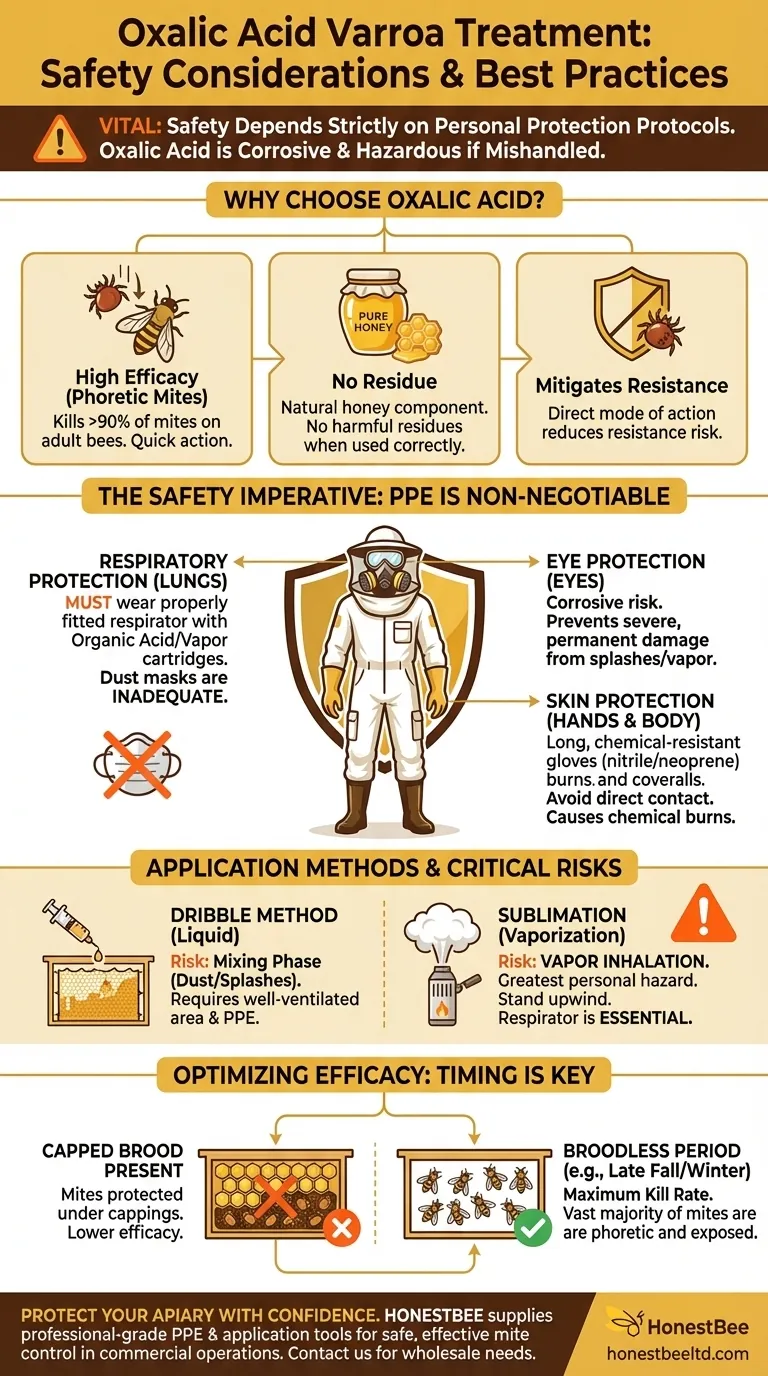
Related Products
- 12V Bee Mite Removal Evaporator Oxalic Acid Vaporizer for Bee Fumigation Treatment 180W Atomization
- Professional Bamboo Queen Isolation Cage
- Wooden Queen Bee Excluder for Beekeeping
- Metal Queen Bee Excluder for Beekeeping
- Professional Plastic Queen Excluder for Modern Beekeeping
People Also Ask
- When is the best time to perform Oxalic Acid Vaporization? Maximize Mite Control for Healthy Hives
- What is the overall goal of using oxalic acid in late fall for beekeepers? Maximize Winter Survival with a Broodless Treatment
- What is the role of oxalic acid in plants? A Key to Plant Defense and Internal Regulation
- What are the methods of administering oxalic acid against Varroa? Drip vs. Sublimation Explained
- What are the two popular methods for applying oxalic acid? Choose the Best Varroa Mite Treatment
